|
FROM THE EVOLUTION OF THE TANGO
to the era when Eva Perón passionately cried out to her countrymen
from a famous balcony in Buenos Aires, Argentina has been closely
associated with a kind of style and æsthetic that melds together
Old World Spain, Italy and France along with New World ideas. However,
that rich, precise kind of flair stretches beyond Buenos Aires and
that balcony into to the rest of the country. Mendoza, located across
the continent and tucked into the Andes, is a small city big on
style, innovative cuisine with organic ingredients, ecotourism and
ambiance.
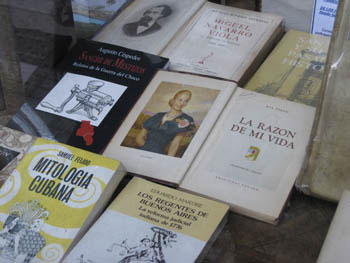
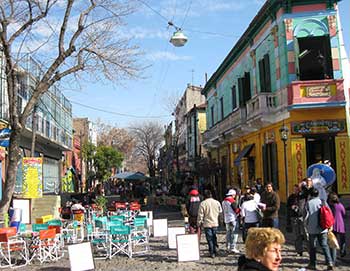
¡Que Buenos! From history to haute cuisine to hip
couture
Whether or not you agree with her politics, the life of the iconic
Eva Perón is an interesting place to start one’s journey,
both figuratively and literally. Amid the world-class art museums
and galleries in Buenos Aires, one of the most fascinating cultural
institutions lies in old money chic area of La Recoleta. The Museo
Evita, forged out of a house Perón took over to house
homeless women and children, is now dedicated to her life story,
politics and undeniable sense of style via film clips, photos and
to-die-for outfits. The former sanctuary also houses a lovely café
serving savoury homespun dishes and great coffee, and guarded by
a cat named in Evita’s honor.
Since the Evita era, many impressive women
have made their mark on Argentina and the world, with their mix
of flair and commitment to the community. Museo
Fortabat, an impressive collection in the Puerto Madero
district, is a living tribute to its founder, María Amalia
Lacroze de Fortabat, a Buenos Aires renaissance woman who was a
long-time chairperson and chief stock holder of Loma
Negra, the largest cement manufacturer in Argentina. This museum,
which includes works by Marc Chagall, Roberto Aizenberg and many
of Argentina’s great contemporary artists, is emblematic of Buenos
Aires’ character itself. La Colección, an airy café
space adjoining the museum and overlooking the city, serves up ambiance
and dishes that mirror the museum’s collection: flavourful, forged
from the finest local products and fused from Argentina’s indigenous
and European influences.
Branching out from the city centre, it is a
natural step to move onto Montserrat to get deeper into recent
local history. The anchoring Plaza de Mayo includes Casa
Rosado, home of that famous balcony where Evita Perón
professed her love to her countrymen. At the moment, Casa Rosado
is also the seat of power for current Argentine president, Cristina
Fernández. It is fitting that she in her own way is as controversial
as Perón, whom she cites as her principal role model, with
both women harnessing their husbands’ popularity as springboards
up to their own platforms of influence.
While the picturesque public area in front
of the Casa and other important buildings, including the Catedral
Metropolitana, is peopled with vendors and office workers on
lunch breaks, there is also the undeniable 30 plus-year presence
of the Mothers of the Plaza de Mayo, parents of 30,000 Argentines
teens and young adults arrested and presumed murdered between 1976
and 1983 by the military government in power. Many of these women
have evolved into major forces in Argentine politics, and have spawned
other groups seeking justice for the genocide. Even with a high
standard of living enjoyed by Buenos Aires and visitors today, it
is important to pay respects to these women, who collectively paved
the way for critical social change.
On a happier note, Buenos Aires women with
all sorts of talents are putting their heads and hearts into revitalizing
the La Boca and San Telmo neighbourhoods. By night
in San Telmo, you can visit venues such as La Ventana, where
classic and modern forms of tango, jazz and traditional Argentine
folk music are preserved and performed. While La Ventana lies just
to this side of touristy, the two-and-a-half hour show is a substantial,
engaging collage of Argentine performing arts, from veteran accordion
mæstros, to a macho gaucho dancer, to lithe dancers in fabulous
art-déco costumes to the closing scene of Evita,
performed in Spanish. San Telmo by day retains a wonderful “old
Buenos Aires” authenticity through its Plaza Dorrego, flanked
by refurbished cafés, boutique hotels and antique stores.
La Boca, meanwhile, is in the midst of a renaissance at the hands
of resident artists. Though locals advise that it may not be the
safest place to be at night, by day it is as alluring and charismatic,
if not more so, than more affluent areas.
That said, Buenos Aires’ posh neighbourhoods
are absolute requirements, especially for fashionistas fixated on
great shoes, bags and silver jewellery. If your tastes run toward
big designer labels and hard-to-find local labels international
stars like Sharon Stone covet, La Recoleta will be your hunting-ground.
Looking for a promenade with a quirky mix of high-street retailers,
leather emporiums and souvenir shops? Florida Street will
be your thoroughfare of choice (check out great in-season finds
and past-season steals at Cardon’s flagship store, with workmanship
that would make Ralph Lauren green with envy). If your time is limited,
or you seek a mix of better Argentine chains and high-end boutiques,
take a spin around Patio Bullrich and Galerías
Pacífico. Here, you will find branches of local shoe-and-handbag
chain Prüne, famous for its luminous colours and supple
skins.
Those interested in breaking the chain, so
to speak, will love the laid-back Palermo Soho, where most
of the fashion-forward action is taking place. Shoe stores are particularly
fabulous, not only for the quality-to-price ratio but also the shopping
environments, which are part-tea salon, part-walk-in closet and
part-couture boutique. Silvia Vane and Mandarine are
pitch-perfect when it comes to reconciling ahead-of-curve colours
and silhouettes with everyday comfort and function. If you’re an
aficionado of statement-making, colour-happy designers as Petro
Zillia or Oilily, the quirky-cute pieces fashioned by Juana de
Arco need to be tried on. On the high end, Harapo Reales
offers one-off sweaters and scarves with many stories behind them,
as several artisans are involved in the creation of each mixed-media
piece. Araceli Pourcel’s boutique takes that form of eclecticism
into office settings and cocktail parties with one-of-a-kind pieces
that balance sculptural flourishes with wearability. If fashion
for the home is more your thing, Capital and Calma Chicha
are filled to the brim with a fun, vibrant mix of retro and
modern home accessories. Though there are many great silver jewellery
boutiques, 925 stands out, as the focus is larger-than-life
cocktail rings.
Cabernet is the ideal place to top off
a day of Palermo Soho shopping or get a preview of the savoury
pleasures that await the visitor in Mendoza. Its wine shop across
the street, Lo De Joachin Alberdi Vinoteca, is not only well-organized,
but downright cool, thanks to vintage album covers aptly paired
with Argentina’s best varietals and blended wines. Back at the warm
and toasty Cabernet, you can put the owner–chef–sommelier’s
judgment to the test, pairing some of those same wines with rich,
hearty and beautifully prepared Epicadas (similar to tapas
or antipasti dishes), steak and salmon dishes.
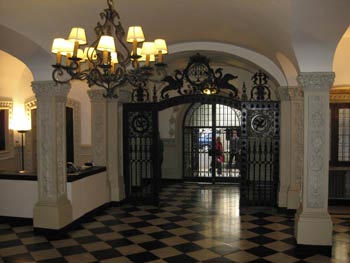
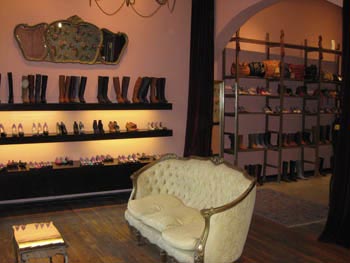
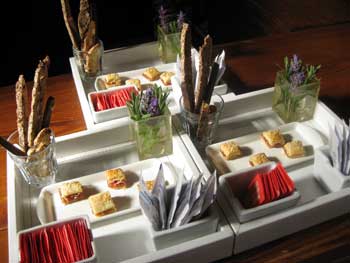
Mendoza: vintage fine
What makes Mendoza—state and city—so memorable is that
its charm and sophistication sneak up on you. The town looks a little
industrial and sleepy as you drive in. However, a short walk and
a few right turns from the Sheraton Mendoza, you’re in the midst
of a lively pedestrian mall anchored by Sarmiento and San Martin
streets, with a seemingly endless offering of (more) leathergoods,
sweet shops doling out divine ice cream and sorbet (Bianco & Nero
is sublime), unprepossessing clothing stores (like Fascino,
a neat sweater store with sweater jackets costing a mere US$25–$50)
and craft boutiques that are refreshingly un-kitschy. Walk a little
further to discover arty little side streets, as well as picturesque
picnic worthy plazas with their own enticing street markets and
cozy artisinal cafés such as the amazing Azafran.
Book-ending the city is the lush Parque San Martin, a sprawling
marriage of green space, monuments, zoo, sports fields and public
amenities.
Beyond the city lies a sort of Garden of Eden
that not only supports and fortifies one of the world’s fastest-growing
(and growing in global acclaim) wine industries, but also stunning,
unique settings to enjoy that food and wine in. If Buenos Aires
reveals the art of fine living like a tasting menu, Mendoza puts
its sensory delights out there, family style and in generous homespun
portions. An hour outside the city, you can not only commune with
nature or ski the Andes, but indulge your senses at other great
Estancias and Bodegas that bring gastronomy to life
beyond the table, and with an emphasis on environmentally friendly
production techniques.
Though La
Alboroza (translated to where happiness lives) is
not a winery or an organic farm, there are a lot of delightful things
growing out of it, including artist–owner Sergio Roggerone’s
canvases fusing Latin and Indian sensibilities and a boutique hotel
still in the works at press time. The décor in the Roggerones’
private quarters, atelier and public space is an inspirational example
of how recycling objects and classic art training can be transformed
into the epitome of fine modern living. The home-turned-Andes oasis
is a stunning jewel box of antiques, objets d’art and books
from around the world, set off with his extraordinary murals, lush
textiles and kaledescopic colour. During our visit, over French-press coffee and pastries,
Sergio shows our group a book given to him by a colleague about
the Rajs of India. He opens the book to a page depicting a couple
from Edwardian times that evocatively resembles himself and his
wife. If reincarnation is true, the Roggerones picked up in the
21st century where they left off over a century ago, with a shared
passion for antiques, global culture and beauty. Even with their
magnetic presence, the temptation is there to wander their property
to see what surprise awaits around every corner and nook.
The Familia
Zuccardi home base is also worthy of exploration, but for
entirely different (but equally wonderful) reasons. This
estate not only offers tours of their wine and olive oil
production facilities, but a number of ways to get around, by bike,
hot air balloon or classic cars. They also offer opportunities to
get even more intimately involved in Argentine country life, with
programmes that enable you to learn viticulture hands on in their
fields or cook with their chefs. You arrive at the Zuccardi estate
as an honoured guest. The family dogs warmly greet you, your bikes
are waiting at the porch and lovely pastries and breads are set
out to fuel your day. Once in the hands of your capable guide, on
foot or wheels, you will be squired to the family’s state-of-the-art
production facility for a tasting of their internationally acclaimed
olive oils. As the sun bakes the fields, the guide hands you protective
goggles and clippers and sends you off to work to harvest or prune
the vines. There’s no better way to appreciate the various wines
that will accompany barbequed Argentine beef and pork and the many
side dishes.
Trapiche
offers tours of their historic winery, which happens to be one
of the oldest surviving buildings in the area. However, their wine
country experience extends to pouring their great Malbecs and other
wines at Almacén
Del Sur and its Mendoza city affiliates, Winery (the
Tiffany’s of wine shops) and adjacent El 23 Gran Bar. The
charming country cottage housing the Almacén gives way to
an expansive and nearly interactive experience, thanks to the sprawling
kitchen and organic gardens. Our hostess Ivana proudly shows off
the various gardens and trees, as well as the solar powered ovens
used to sun-dry tomatoes and other things they will tempt you with
later via its retail area and restaurant set up. The motto, ‘Food
4 Wine’, graces the Almacén and its siblings, but what
really gets the message across is experiencing their organic food
and Trapiche wine pairings.
The most stunning sensory snapshot of Argentina’s
ruggedly beautiful west can be found at Espacio
Salentein, which incorporates the art déco-inspired
Salentein Winery, Killka Restaurant, Museo Killka
and Posada Salentein into a spiritual awakening. Near-perfect
cuisine, excellent wines and eclectic mix of modern and Renaissance
Dutch art is truly worth going to the ends of the Earth for. But
then again, there is Killka’s savoury lamb dishes, seasonal green
salad and perhaps one of the most magnificent incarnation of the
classic dulce de leche dessert, with molten caramel oozing
from the pores and faults of flaky, sugar-dusted pastry, paired
with Malbecs and desert wines clearly benefiting from Salentein’s
unique soils and microclimates.
Whether your idea of an ideal vacation is town or country, or you
want a taste of both, chances are you’ll ultimately come away from
Argentina with a smile on your face, both with a sense of pride
and the memory of sensory pleasure. •
|  |
One of the most fascinating cultural institutions
lies in old money chic area of La Recoleta. The Museo
Evita, forged out of a house Perón took over to house
homeless women and children, is now dedicated to her life story
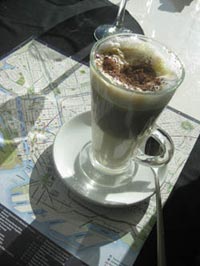
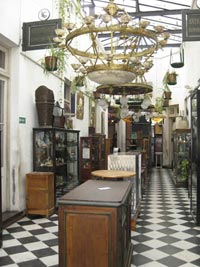
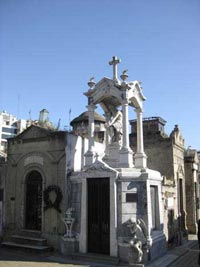
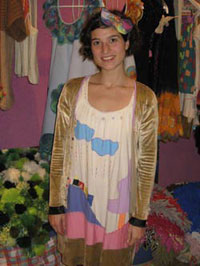
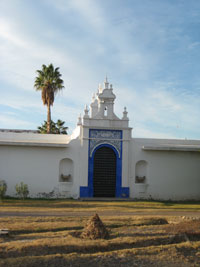
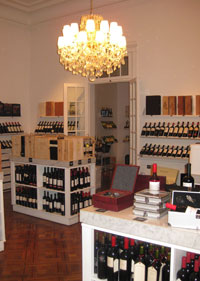
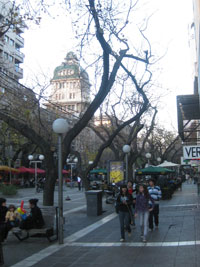
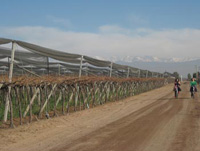
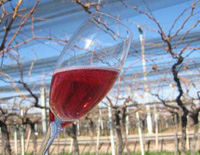
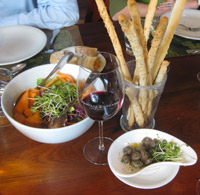
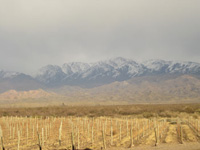

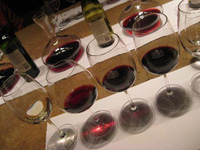
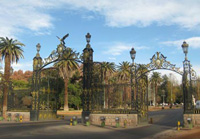
For more information on Argentina, visit www.argentina.travel.
LAN Chile Airlines (www.lan.com)
offers multiple flights to Argentina via Los Angeles, Miami and
New York City, as well as Australia and New Zealand. The Park Tower
Hotel in Buenos Aires and the Sheraton in Mendoza, both Starwood
properties, are highly recommended for their central city locations,
amenities and first-rate staff.
Elyse Glickman is US West Coast editor of Lucire.
|

